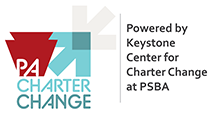Charter schools were created, in part, to improve student learning. More than 26 years since the creation of charter schools in Pennsylvania, the data and research related to charter school performance indicate that overall, this has not been the case. Explore the questions below to learn more about how charter school performance compares to that of traditional school districts.
- 3rd grade English language arts proficiency was 27.8% lower in cyber charter schools than traditional school districts.
- 7th grade math proficiency was 25.0% lower in cyber charter schools than traditional school districts.
Although graduation rates of brick-and-mortar charter schools are comparable to school districts, graduation rates at cyber charter schools are substantially lower. In fact, 4-year graduation rates at cyber charter schools are more than 23% lower than school districts.
The chart below shows 4- and 5-year graduation rates by school type – for all students in the school entity group and for the average school entity in the group. Click the tabs at the top of the chart to switch between 4- and 5-year graduation rates.
A study of Pennsylvania’s charter school performance released in June 2019 by the Center for Research on Education Outcomes (CREDO) at Stanford University found that students enrolled in cyber schools post significantly weaker growth than the average student in a traditional public school and the average brick-and-mortar charter school student. The study showed that a student enrolled in a cyber charter school loses the equivalent of 106 days of learning in reading and about 118 days of learning in math compared to the average traditional public school student.
Further, the report noted that “any potential benefits of online schooling such as student mobility and flexibility in curriculum are drowned out by the negative impacts on academic growth of students enrolled in such schools.” The study also showed there has been little to no progress in Pennsylvania charter school performance since CREDO’s 2013 National Charter School Study.
Despite the generally flat performance overall, there were some important positive findings for Pennsylvania charter schools. Most notable is the strong reading performance of some brick-and-mortar charter schools; in math, brick-and-mortar charter school students perform similarly to the average traditional public school.
